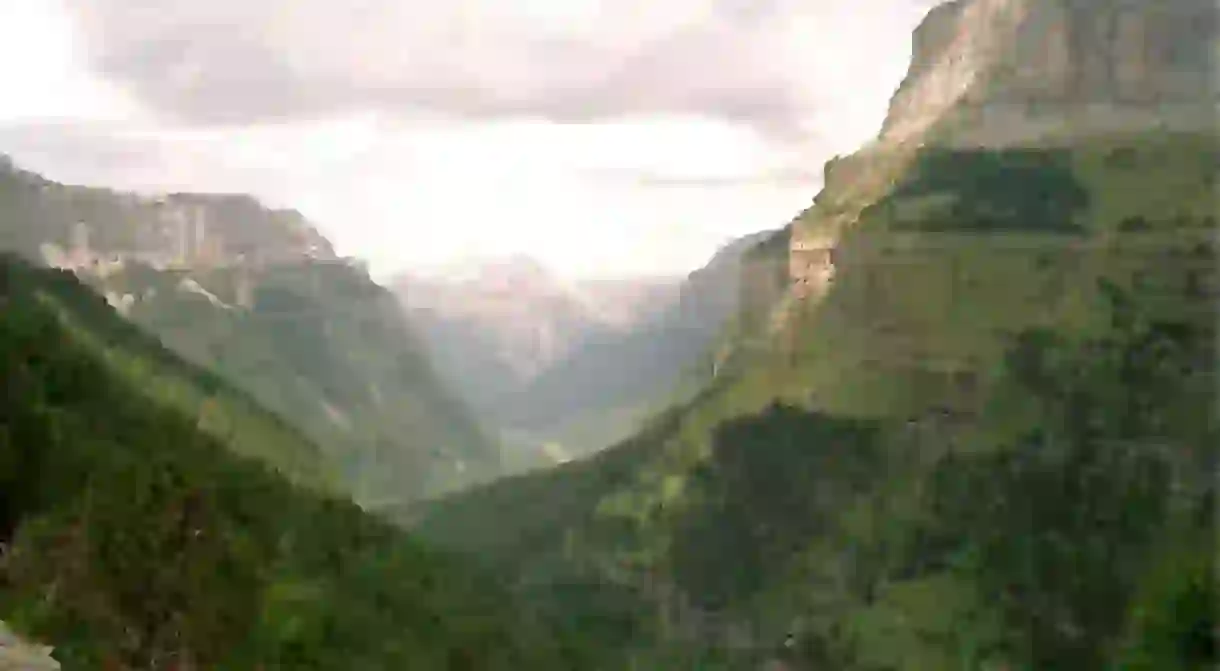10 Things to Know Before Visiting the Parque Nacional de Ordesa y Monte Perdido

The National Park of Ordesa y Monte Perdido is located within the Aragonese Pyrenees and is one of the main highlights of the area. It was in fact one of the world’s first national parks, created in 1918. Today, it’s a magical place to visit, filled with soaring peaks, glacial lakes, cascading waterfalls and all manner of flora and fauna. Here are ten things to know before you visit.
You can reach the park by public transport
The Parque Nacional de Ordesa y Monte Perdido can be found approximately 12okm north of the Spanish city of Huesca. The closest railway stations to the park are Monzón and Sabiñanigo, and there are connecting buses to Ordesa and the town of Ainsa.
It’s both a biosphere reserve and UNESCO World Heritage Site
The park was established in 1918 and was Spain’s first protected area; it’s also one of the most important national parks in northern Spain. Today it also enjoys UNESCO World Heritage status and is also a UNESCO Biosphere Reserve.

There are lots of great hiking trails
The park is filled with many different hiking trails of varying levels of length and difficulty. There are those high up in the rocky pinnacles, those down in the lush valleys or around the edge of lakes, and is well signposted and easy to follow. Choose from those taking just a couple of hours to all day hikes or even those where you have to stay overnight in a shelter.
The park is home to over 150 different species of animals
The park is home to around five species of amphibians, eight reptiles, 106 types of birds and 32 mammals. These include ospreys, golden eagles, groundhogs, wild boar and goat-like antelopes.

It’s home to the highest calcareous massif in Europe
The park is home to the highest calcareous massif in Europe – a range of mountains made from calcium carbonate and limestone. At the centre of the park stands the magnificent summit of Monte Perdido itself – at 3,355m (11,000 ft), it’s the third highest peak in the Pyrenees.

You can visit ancient glacial lakes here
The park is filled with stunning natural attractions, some of which include ancient glacial lakes. One of the most spectacular of these is Lake Marboré, close to the Monte Perdido peak.
One of the most beautiful parts of the park is the Ordesa Valley
The park covers 156 square kilometres and is made up of a variety of different areas – from high massifs to glacial valleys, rivers and waterfalls. One of the most attractive areas of the park is the Ordesa Valley, after which the park is named, which is crossed by the Río Arazas River.

You can stay overnight in the park
There are many different options for staying overnight, both near and in the park itself. Choose from simple refugios (rural guesthouses) and shelters to campsites, hotels and hostels.
You can see the stunning Cola de Caballo waterfall
One of the highlights of the park is the Cola de Caballo, or Horsetail, Waterfall. Located in between the Circo de Soaso – a natural rock amphitheatre – it’s quite a sight to behold, with many cascades falling from a great height. Visitors can hike the 16km round-trip trail to the waterfall.

Visitors can take part in a number of different adventure sports within the park
As well as hiking and mountain climbing, there are a number of adventure sports that visitors can enjoy in the park. There are excursions by 4×4, two different horse riding stables and two companies offering kayaking, whitewater rafting and canyoning.













